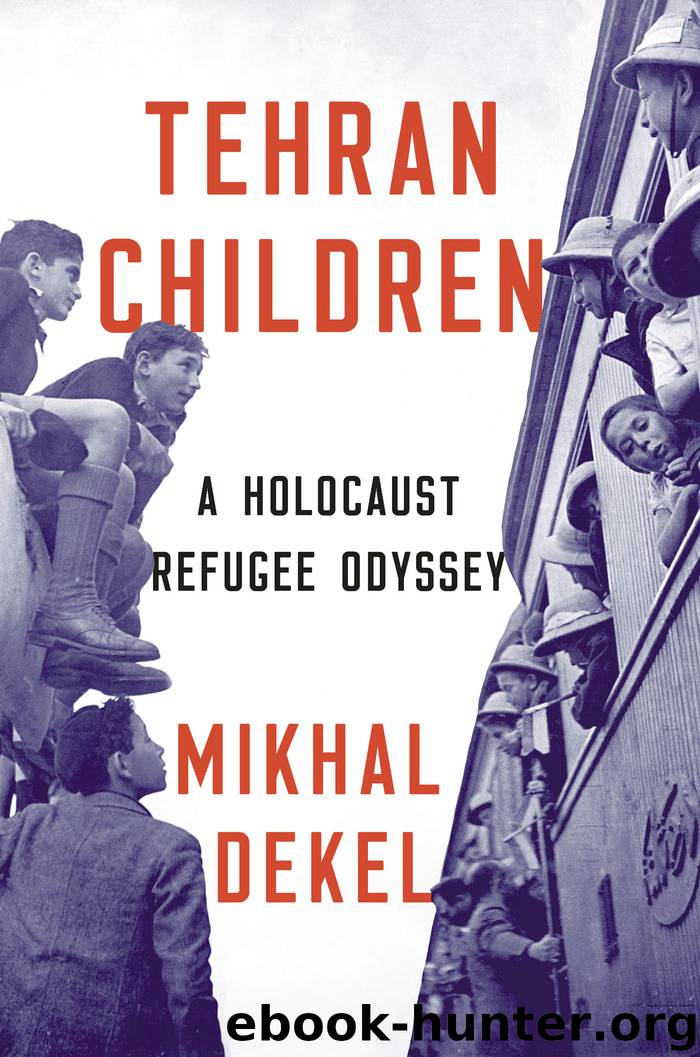Tehran Children by Mikhal Dekel

Author:Mikhal Dekel
Language: eng
Format: epub
Publisher: W. W. Norton & Company
Published: 2019-08-29T00:00:00+00:00
On the day before I left Poland, an exhibition of “Old Ostrów” was constructed outside Ostrów’s neoclassical municipality building. Eight four-foot posters were hung, the first of which was a photo of the Teitel Brewery, showing my grandfather Zindel Teitel, his brother Icok, and a few other men in long winter coats standing next to their vehicles in the brewery’s front yard. The poster’s caption was TEITEL BROCA BROWAR, 1885–1940, nothing more, nothing less. I recognized the brewery photo from Regina’s album—it was not in the public domain—and wondered who else in town had it. And to whom did the brewery’s history belong anyway, to the Jews or the Poles? Next to the poster, a bride and groom posed for a photo shoot: she with dyed blond hair, he in a polyester tuxedo, a little beat-up looking, the future of Ostrów. “I have a fantasy,” Magda said as we looked at them, “that we should drink wine and eat kugel on the grounds of the browar on the eve of Rosh Hashanah like your family celebrated here before the war.” I laughed, touched but also wary. We had been negotiating something, Magda and I, a way back to reconstituting some shared version of history, and each of us would have to give something. “Rizcard told me that Ostrówer Jews before the war were ‘too nice.’ It isn’t right that they felt they had to be too nice. They didn’t feel natural,” she said one night. It was the furthest she could go.
Two years later, in 2015, Andrzej Duda’s rightist, nationalist Law and Justice government would be elected, and Magda Gawin would be appointed undersecretary of state in the Ministry of Culture and National Heritage, conserver of National Monuments, and member of the Council for the Protection of Memory of Combat and Martyrdom. “It’s because of my aunt Jadwiga,” she would tell me when we met again, briefly, in London. “My work on Jadwiga’s history taught me what I need to do on this job.” In the two years since my visit, Yad Vashem had declined Magda’s petition to have Jadwiga Długoborska recognized as a Righteous Among the Nations, citing insufficient evidence. But Duda’s government would open its own Museum of Poles Who Saved Jews in the southeastern town of Markowa, and announce plans for two more monuments for the righteous: next to the All Saints Church on Warsaw’s Grzybowski Square, and near the Museum of the History of Polish Jews, atop what used to be the Warsaw Ghetto.
In early 2018 Duda’s government announced that it was building a dedicated Warsaw Ghetto Museum that would “speak of the mutual love between the two nations that spent eight hundred years here, on Polish land. Of the solidarity, fraternity, historical truth in all its aspects,” as Magda’s boss, Culture Minister Piotr Gliński, told reporters.75 Later that year, an Israeli historian, Daniel Blatman, announced that he would be assuming the position of museum’s chief historian. I met Magda once more, in London, where I
Download
This site does not store any files on its server. We only index and link to content provided by other sites. Please contact the content providers to delete copyright contents if any and email us, we'll remove relevant links or contents immediately.
Cecilia; Or, Memoirs of an Heiress — Volume 1 by Fanny Burney(32434)
Cecilia; Or, Memoirs of an Heiress — Volume 2 by Fanny Burney(31869)
Cecilia; Or, Memoirs of an Heiress — Volume 3 by Fanny Burney(31852)
The Great Music City by Andrea Baker(31340)
We're Going to Need More Wine by Gabrielle Union(18967)
All the Missing Girls by Megan Miranda(15565)
Pimp by Iceberg Slim(14393)
Bombshells: Glamour Girls of a Lifetime by Sullivan Steve(13972)
Talking to Strangers by Malcolm Gladwell(13222)
Norse Mythology by Gaiman Neil(13204)
Fifty Shades Freed by E L James(13157)
For the Love of Europe by Rick Steves(12943)
Mindhunter: Inside the FBI's Elite Serial Crime Unit by John E. Douglas & Mark Olshaker(9199)
Crazy Rich Asians by Kevin Kwan(9167)
The Lost Art of Listening by Michael P. Nichols(7406)
Enlightenment Now: The Case for Reason, Science, Humanism, and Progress by Steven Pinker(7228)
The Four Agreements by Don Miguel Ruiz(6630)
Bad Blood by John Carreyrou(6552)
Weapons of Math Destruction by Cathy O'Neil(6142)
